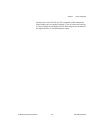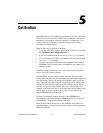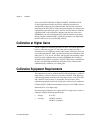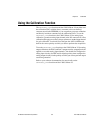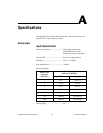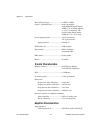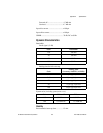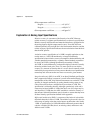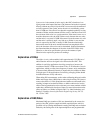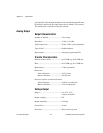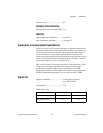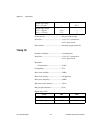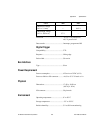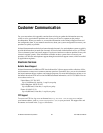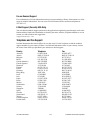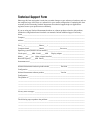Appendix A Specifications
© National Instruments Corporation A-5 PCI-1200 User Manual
System noise is the amount of noise seen by the ADC when there is no
signal present at the input of the board. The amount of noise that is reported
directly (without any analysis) by the ADC is not necessarily the amount of
real noise present in the system, unless the noise is considerably greater
than 0.5 LSB rms. Noise that is less than this magnitude produces varying
amounts of flicker, and the amount of flicker seen is a function of how near
the real mean of the noise is to a code transition. If the mean is near or at a
transition between codes, the ADC flickers evenly between the two codes,
and the noise is very near 0.5 LSB. If the mean is near the center of a code
and the noise is relatively small, very little or no flicker is seen, and the
noise is reported by the ADC as nearly 0 LSB. From the relationship
between the mean of the noise and the measured rms magnitude of the
noise, the character of the noise can be determined. National Instruments
has determined that the character of the noise in the PCI-1200 is fairly
Gaussian, so the noise specifications given are the amounts of pure
Gaussian noise required to produce our readings.
Explanation of Dither
The dither circuitry, when enabled, adds approximately 0.5 LSB rms of
white Gaussian noise to the signal to be converted to the ADC. This
addition is useful for applications involving averaging to increase the
resolution of the PCI-1200 to more than 12 bits, as in calibration. In such
applications, which are often lower frequency in nature, noise modulation
is decreased and differential linearity is improved by the addition of dither.
For high-speed 12-bit applications not involving averaging, dither should
be disabled because it only adds noise.
When taking DC measurements, such as when calibrating the board, enable
dither and average about 1,000 points to take a single reading. This process
removes the effects of 12-bit quantization and reduces measurement noise,
resulting in improved resolution. Dither, or additive white noise, has the
effect of forcing quantization noise to become a zero-mean random variable
rather than a deterministic function of input. For more information on the
effects of dither, see “Dither in Digital Audio” by John Vanderkooy and
Stanley P. Lipshitz, Journal of the Audio Engineering Society, Vol. 35,
No. 12, Dec. 1987.
Explanation of DAQ Rates
Maximum DAQ rates (number of S/s) are determined by the conversion
period of the ADC plus the sample-and-hold acquisition time, which is
specified at 10 µs. During multichannel scanning, the DAQ rates are further
limited by the settling time of the input multiplexers and programmable



